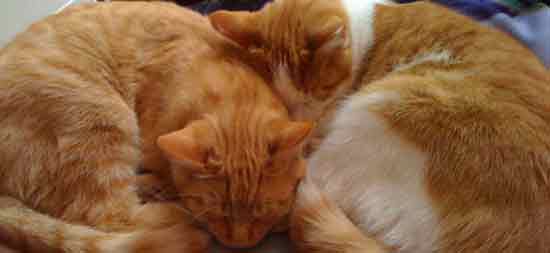Say you want to create a sculpture of two sleeping cats. Starting with a large block of stone, you chip away until paws and ears and tails appear. As you work, you try to bring out the softness of the fur and the fine texture of the whiskers, distinguishing to the best of your sculpting ability between orange stripes and an all-white belly. The subtleties are an enormous challenge when working in stone, which is neither soft, nor fine in texture, nor color-sensitive. But those same subtleties are what will bring your sculpture to life.

To create a story, writers must first build that initial block. Instead of stone, we heap words on top of each other, lots of words – until we have a squared-off approximation of a beginning, middle, and end. Only then can we start chipping away, using the writerly equivalent of a set of sharp chisels to sculpt out the story.
Hence the term, “rough draft.”
The only way for me to find the story hiding in the rough is to cuddle up with my unfinished sculpture, picking away at a word here, or there… until, aha! A whisker appears.
It’s slow work, and there’s little to show for my efforts; while writing the rough draft, at least I was increasing my word count. Now, in this editorial chiseling phase, I usually end up with fewer words at the end of the day.
And yet it’s immensely satisfying, because this phase brings the story to life. Look! I think I see an ear. White-tipped, with tufts of orange fur inside…
It’s so easy to think a story is finished when it first begins to take shape, but there’s still a lot more work ahead.
The best stories, the ones we remember, are constructed from a careful set of details that can only be laced together (in the right order, using the right words) once the writer figures out the big picture.
A chicken and egg question: is the story built from the details, or do details emerge from the story? It might be different for other writers; for me I do best when I focus on the little pieces, trusting that an overall shape and texture will eventually appear.
Fortunately, we writers (unlike our friend the sculptor) can move sections around or even tack on a whole new piece when we realize something’s missing. Perhaps we think we’re writing a story about one cat, and as we chip away we realize there’s another one lurking in the shadows. A few carefully chosen words, et voila! Double the felines, double the fun.
And, look, over there; hiding behind all those soon to be chipped-away adverbs – could that be a curled-up tail I see?
One Reply to “What’s a Rough Draft?”
Comments are closed.